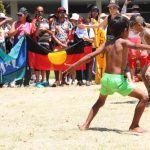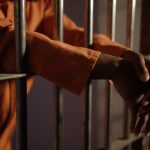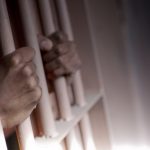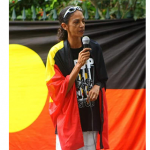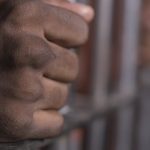Government Slammed for Inaction Over Mass Incarceration of First Nations Peoples
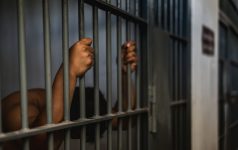
Right now, Aboriginal and Torres Strait Islander people are the most incarcerated people on Earth. Despite making up 2.8 percent of the overall population in Australia, First Nations people account for close to 28 percent of the adult prisoner population.
Last year, around 18 out of every 1,000 Indigenous people in this country were imprisoned. In the NT, 84 percent of the adult prisoner population was Aboriginal or Torres Strait Islander, while 100 percent of youths being locked up in juvenile detention in that jurisdiction were Indigenous.
And just last week, the Law Council of Australia slammed the government for its failure to respond to the recommendations of an Australia Law Reform Commission (ALRC) report into the “national disgrace and international embarrassment” that is Indigenous incarceration in this country.
The Pathways to Justice report was released a year ago last Thursday, 28 March. And the silence over the report is only compounded by the fact that it was actually the Liberal Nationals government that commissioned the ALRC to conduct the inquiry.
Law Council president Arthur Moses SC said this failure to act reveals the government’s indifference, along with the fact it has no appreciation of the necessity for Aboriginal-led solutions to be implemented when dealing with the crisis of First Nations imprisonment.
Inherent in the system
“We’re the most criminalised people in the world,” said Gwenda Stanley, a spokesperson for First Nations rights group FISTT. “It’s just horrendous the way our people have been treated. Many of them have been incarcerated for just petty crimes.”
Ms Stanley is from the Gomeroi nation, which is one of the four largest Indigenous nations on the continent. It’s situated in the region that’s now referred to as northern NSW and southern Queensland, which is an area that’s seen some of the most heavy imprisonment rates.
“I’ve seen three or four generations go through the system,” Ms Stanley told Sydney Criminal Lawyers. “The government response is just typical of the Liberal and the Labor parliaments that want to oppress my people.”
According to Stanley, the mass incarceration of Aboriginal and Torres Strait Islander people reflects the systemic racism in the system. And currently, there are no measures or reforms being undertaken to address this overrepresentation.
An imposed penal system
The authors of Pathways to Justice make clear that while statistics regarding the “disproportionate incarceration” of First Nations peoples are “alarming”, it’s “important to bear in mind that the majority of Aboriginal and Torres Strait Islander people never commit a criminal offence”.
The report sets out that in the early years of British occupation, First Nations peoples weren’t frequently imprisoned. Although, from the position of the occupying force the local people were subject to British law – including criminal law – from the onset of their arrival.
From the late 1800s and into the early 1900s, the British began a so-called “protection” policy, whereby Indigenous people were removed from their lands and held on reserves with the government taking control of all aspects of their lives, with police administering these measures.
Academics have posited that the dismantling of this “alternative system of penality” saw Indigenous people increasingly appear in the mainstream prison system. And in 1982, with the advent of the national prison census, the overrepresentation of First Nations peoples inside became apparent.
The government inquiry
It was in the mid-80s that a number of Aboriginal deaths in prisons and police lockups led to calls for a national investigation. And in August 1987, the Hawke government announced the Royal Commission into Aboriginal Deaths in Custody.
The Royal Commission investigated the deaths of 99 First Nations people around the country over a 10 year period. Delivered in 1991, the commission’s final report included 339 recommendations, most of which have never been acted upon.
The inquiry found that “a multitude of factors – both historical and contemporary – interact to cause Aboriginal people to be seriously overrepresented in custody”. And it stressed that the current circumstances of Indigenous peoples are “a direct consequence of their experience of colonialism”.
However, the representation of First Nations peoples in Australian gaols has doubled from the 14 percent it was at the time the report was released. And as of last August, 407 Aboriginal and Torres Strait Islander people had died in custody since 1991.
Law reform recommendations
The recommendations that were made by the ALRC – and were subsequently ignored by the federal government – numbered 34. These included requiring of bail authorities to consider Aboriginality when dealing with issues that arise around bail conditions.
And a recommendation that sentencing legislation should require courts to take into account “unique systemic and background factors” affecting First Nations peoples. Also, the report suggests there be improved access to community-based sentencing options for Indigenous people.
While mandatory sentencing requirements need to be repealed around offences that have a disproportionate impact upon Aboriginal and Torres Strait Islander people. And specialist Indigenous sentencing courts should be established where its deemed appropriate.
First Nations women overrepresented
In regard to Indigenous women, the Pathways to Justice report suggests that programs and services leading up to, during and after prison should be geared to their specific needs. And it also recommended that police undergo training on how to deal with domestic violence matters.
First Nations women are the most disproportionately represented group in the Australian prison system. They account for 34 percent of the women being detained in gaols in this country, while representing less than 3 percent of the overall population.
Indeed, between 1991 and 2017, the number of First Nations women being incarcerated in Australia increased by 250 percent. And in Western Australian, a large number of single Aboriginal mothers are still being locked up for outstanding fines they can’t afford to pay.
First Nations justice
As far as Gwenda Stanley is concerned, it’s about time that Aboriginal and Torres Strait Islander laws were incorporated into the Australian criminal justice system, so that Indigenous people can be dealt with under laws that are culturally appropriate to them.
The long-time First Nations rights activist explained that the approach that needs to be taken is preventative, as a cycle of locking up certain Indigenous people has developed, which is intergenerational. And you only need to track family names to see the proof of this.
“We’ve really got to be looking at a system where our laws are respected,” Ms Stanley concluded, “and our lore is able to work within the mainstream system as well.”



